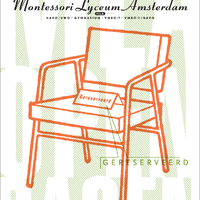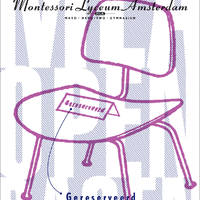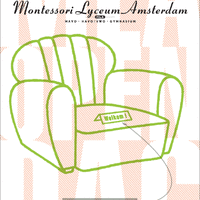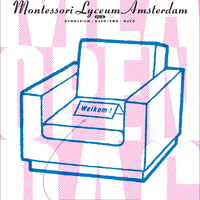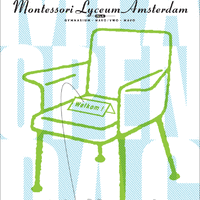Both the designer and the commissioner share the responsibility of ensuring a healthy social working environment, which is needed to guide a fruitful discussion. Each is responsible for stimulating enthusiasm in the other. With enthusiasm, comes a light and positive sphere where interaction and exchange of knowledge and ideas can easily surface. Thus, the commissioner thinking along with the designer and vice versa, the designer giving input on the commissioner’s domain.
At our office, we sometimes enter the meeting room with a box of visual proposals that some of our commissioners refer to as ‘the box of goodies’. In the box are carefully constructed prototypes, such as three-dimensional visualizations of our thoughts where the perfect solution has to yet assume its form. These prototypes are mostly for the purpose of illustrating several ideas, for this reason the prototypes are plain and free of excessive visual details, leaving space for imagination. The commissioners, with their expertise, are invited to take part in the design process and to add another ‘interpretation’ to the design other than that of the designer’s. Most commissioners take up the challenge and start to work with the ‘unfinished’ graphic elements, searching for an unexpected combination and thus bearing the role of the designer. It is intriguing for us to witness this process, to observe how the commissioners work with the ingredients and the rules provided by us. The outcome of such excursion is often one that leads to unexpected and thoughtful solutions.
It is at these times—when the designer’s and the commissioner’s role cross path with each other—that the process takes an interesting twist. Our office had designed a series of posters in promoting an Amsterdam high school to schoolers in their last year of elementary education. A colourful chair with a ‘welcome’ sign dominates visually the poster; its concept is significant in two ways.
Firstly, the chair tells the potential applicants, the elementary schoolers, there is a place for them at the ‘Open Day’ and possibly the coming six years of their educational life. Secondly, the ‘welcome chair’ implies that every student at this school is seen and respected as an individual. The concept of the chair was inspired by the philosophy and the positive sphere of the school. In return, the chair became a representation of the essence of the school. Where upon, during the ‘Open Day’ speech to the parents, the school director sat on the stage performing his own presence in a similar chair as one portrayed in the poster, to proclaim the philosophy of the school.
Not all designer-commissioner relationships are sensible; naturally the contrary exists as well. Such as bad chemistry, which can simply arise without an apparent cause as in any human interactions. Or between first time commissioners and first time designers, when each still has yet to learn of his/her role in this social dance. There are as well commissioners whose vision of the final form is all too absolute, so that the designer becomes no more than the executioner of the commissioner’s ‘design’. Or the contrary, designers who hijack the project as a means of their own self-expression. The result of such ill relationships is often a product that is either lack of inspiration or one that ceases to communicate. In such a situation, none is a greater victim than the end-user.



